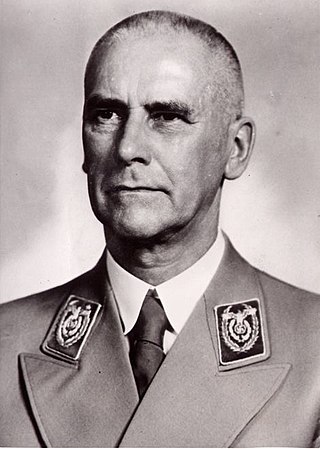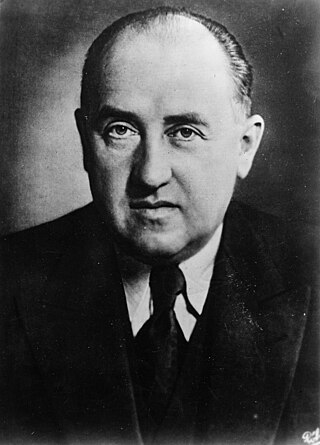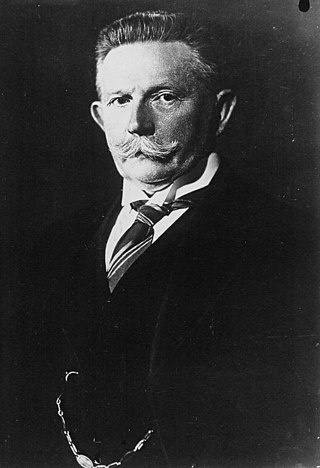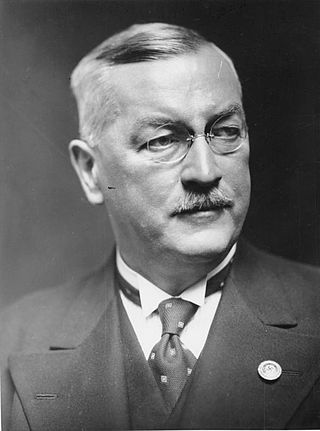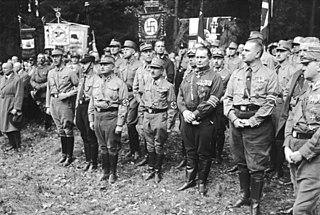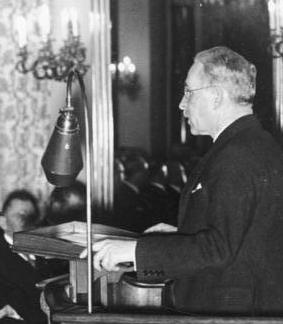History
In brokering the appointment of Hitler as Reich Chancellor, Papen had sought to control Hitler by limiting the number of Nazi ministers in the cabinet; initially Hermann Göring (without portfolio) and Wilhelm Frick (Interior) were the only Nazi ministers. Further, Alfred Hugenberg, the head of the DNVP, was enticed into joining the cabinet by being given the Economic and Agricultural portfolios for both the Reich and Prussia, with the expectation that Hugenberg would be a counterweight to Hitler and would be useful in controlling him. Of the other significant ministers in the initial cabinet, Foreign Minister Konstantin von Neurath was a holdover from the previous administration, as were Finance Minister Lutz Graf Schwerin von Krosigk, Post and Transport Minister Paul Freiherr von Eltz-Rübenach, and Justice Minister Franz Gürtner.
The cabinet was "presidential" and not "parliamentary", in that it governed on the basis of emergency powers granted to the President in Article 48 of the Weimar Constitution rather than through a majority vote in the Reichstag. This had been the basis for Weimar cabinets since Hindenburg's appointment of Heinrich Brüning as Chancellor in March 1930. Hindenburg specifically wanted a cabinet of the nationalist right, without participation by the Catholic Centre Party or the Social Democratic Party, which had been the mainstays of earlier parliamentary cabinets. Hindenburg turned to Papen, a former Chancellor himself, to bring such a body together, but blanched at appointing Hitler as Chancellor. Papen was certain that Hitler and the Nazi Party had to be included, but Hitler had previously turned down the position of Vice Chancellor. So Papen, with the help of Hindenburg's son Oskar, persuaded Hindenburg to appoint Hitler Chancellor.
Initially, the Hitler cabinet, like its immediate predecessors, ruled through Presidential decrees written by the cabinet and signed by Hindenburg. However, the Enabling Act of 1933, passed two months after Hitler took office, gave the cabinet the power to make laws without legislative consent or Hindenburg's signature. [notes 1] In effect, the power to rule by decree was vested in Hitler, and for all intents and purposes it made him a dictator. After the Enabling Act's passage, serious deliberations more or less ended at cabinet meetings. It met only sporadically after 1934, and last met in full on 5 February 1938. [4]
When Hitler came to power, the cabinet consisted of the Chancellor, the Vice-Chancellor and the heads of 10 Reich Ministries. Between 1933 and 1941 six new Reichsministries were established, but the War Ministry was abolished and replaced by the OKW. The cabinet was further enlarged by the addition of several Reichsministers without Portfolio and by other officials, such as the commanders-in-chief of the armed services, who were granted the rank and authority of Reichsministers but without the title. [5] In addition, various officials – though not formally Reichsministers – such as Reich Youth Leader Baldur von Schirach, Prussian Finance Minister Johannes Popitz, and Chief of the Organisation for Germans Abroad, Ernst Wilhelm Bohle, were authorised to participate in Reich cabinet meetings when issues within their area of jurisdiction were under discussion. [6] [7]
As the Nazis consolidated political power, other parties were outlawed or dissolved themselves. Of the three original DNVP ministers, Franz Seldte joined the Nazi Party in April 1933, Hugenberg departed the cabinet in June when the DNVP was dissolved and Gürtner stayed on without a party designation. [8] There were originally several other independent politicians in the cabinet, mainly holdovers from previous governments. Gereke was the first of these to be dismissed when he was arrested for embezzlement on 23 March 1933. [9] Papen was then dismissed in early August 1934. Then, on 30 January 1937, Hitler presented the Golden Party Badge to all remaining non-Nazi members of the cabinet (Blomberg, Eltz-Rübenach, Fritsch, Gürtner, Neurath, Raeder & Schacht) and enrolled them in the Party. Only Eltz-Rübenach, a devout Roman Catholic, refused and resigned. [10] Similarly, on 20 April 1939, Brauchitsh and Keitel were presented with the Golden Party Badge. Dorpmüller received it in December 1940 and formally joined the Party on 1 February 1941. Dönitz followed on 30 January 1944. Thus, no independent politicians or military leaders were left in the cabinet.
The actual power of the cabinet as a body was minimised when it stopped meeting in person and decrees were worked out between the ministries by sharing and marking-up draft proposals, which only went to Hitler for rejection, revision or signing when that process was completed. The cabinet was also overshadowed by the numerous ad hoc agencies – both of the state and of the Nazi Party – such as Supreme Reich Authorities and plenipotentiaries – that Hitler caused to be created to deal with specific problems and situations. Individual ministers, however, especially Göring, Goebbels, Himmler, Speer, and Bormann, held extensive power, at least until, in the case of Göring and Speer, Hitler came to distrust them.
By the final years of World War II, Bormann had emerged as the most powerful minister, not because he was head of the Party Chancellery, which was the basis of his position in the cabinet, but because of his control of access to Hitler in his role as Secretary to the Führer. [11]
Postwar indictment and result of prosecutions
As part of the Reichsregierung (Reich Government) the Reich Cabinet was indicted as a criminal organisation by the International Military Tribunal. It was ultimately adjudged at the conclusion of the Nuremberg trials not to be a criminal organisation. [25]
With regard to the individual members, by the fall of the Nazi regime in May 1945 five members of the Reich Cabinet had committed suicide (Hitler, Bormann, Himmler, Goebbels, & Rust). Six others had already died (von Eltz-Rübenach, von Fritsch, Gürtner, Kerrl, Röhm, & Todt). However, 15 surviving members of the Cabinet were individually indicted and tried for war crimes by the IMT along with Martin Bormann who was tried in absentia as he was thought to be still alive. Eight were sentenced to death (Bormann, Hans Frank, Frick, Göring, Keitel, von Ribbentrop, Rosenberg, & Seyss-Inquart) six were imprisoned (Dönitz, Funk, Hess, von Neurath, Raeder, & Speer) and two (Schacht & von Papen) were acquitted.
An additional four Cabinet members (Darré, Lammers, Meissner, & Schwerin von Krosigk) were tried by a US military court in the subsequent Ministries Trial; all but Meissner were convicted and imprisoned. One (Schlegelberger) was tried in the Judges' Trial and imprisoned. One (Karl Hermann Frank) was tried by a Czech court and sentenced to death. Another five (Backe, von Blomberg, von Brauchitsch, Seldte, & Thierack) died in Allied custody before being brought to trial. Finally, the remaining cabinet members, including some of those acquitted in the Allied trials, were brought before special German denazification courts which categorised their level of guilt and determined whether punishment was warranted. Among those convicted under this process were Hierl, von Papen, and Schacht.


